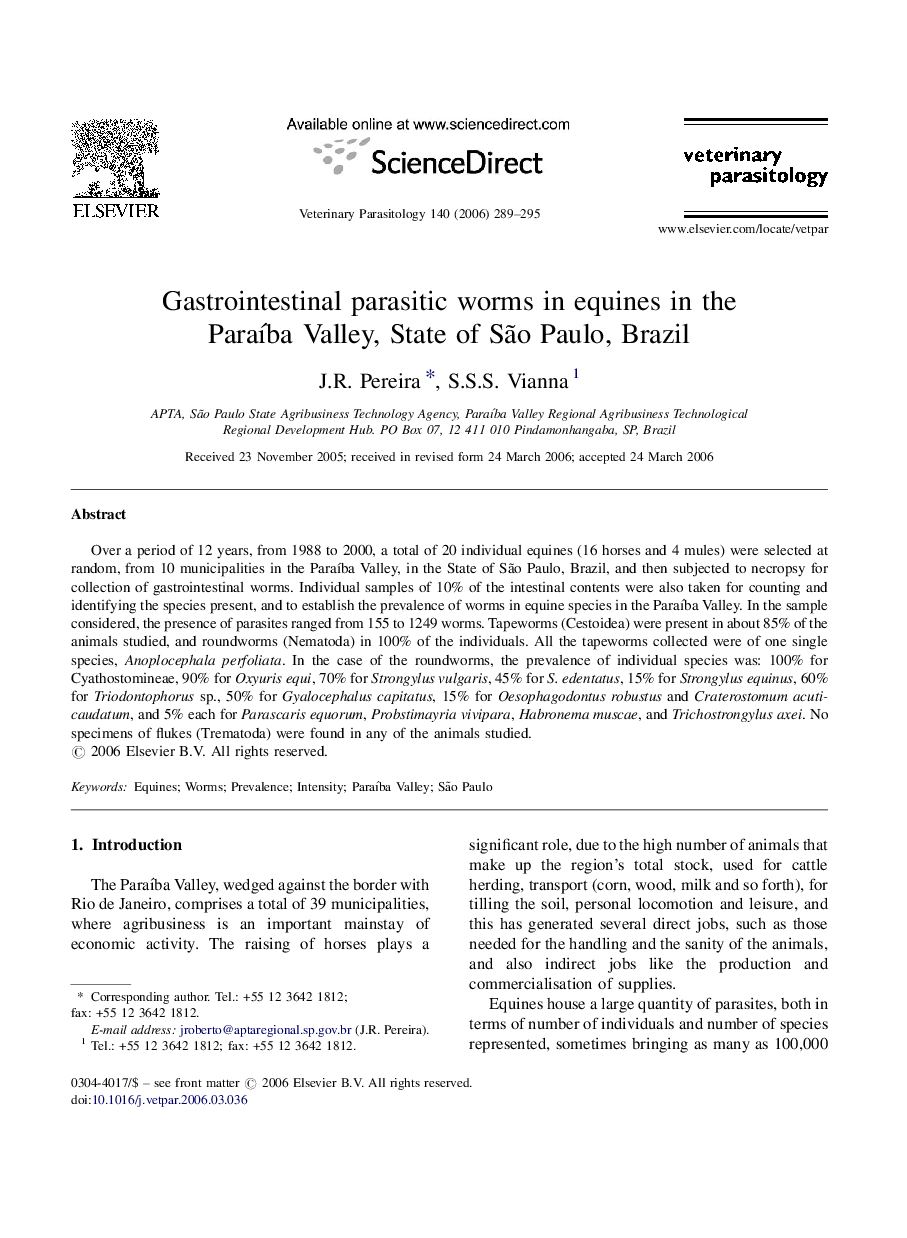| Article ID | Journal | Published Year | Pages | File Type |
|---|---|---|---|---|
| 2472405 | Veterinary Parasitology | 2006 | 7 Pages |
Over a period of 12 years, from 1988 to 2000, a total of 20 individual equines (16 horses and 4 mules) were selected at random, from 10 municipalities in the Paraíba Valley, in the State of São Paulo, Brazil, and then subjected to necropsy for collection of gastrointestinal worms. Individual samples of 10% of the intestinal contents were also taken for counting and identifying the species present, and to establish the prevalence of worms in equine species in the Paraíba Valley. In the sample considered, the presence of parasites ranged from 155 to 1249 worms. Tapeworms (Cestoidea) were present in about 85% of the animals studied, and roundworms (Nematoda) in 100% of the individuals. All the tapeworms collected were of one single species, Anoplocephala perfoliata. In the case of the roundworms, the prevalence of individual species was: 100% for Cyathostomineae, 90% for Oxyuris equi, 70% for Strongylus vulgaris, 45% for S. edentatus, 15% for Strongylus equinus, 60% for Triodontophorus sp., 50% for Gyalocephalus capitatus, 15% for Oesophagodontus robustus and Craterostomum acuticaudatum, and 5% each for Parascaris equorum, Probstimayria vivipara, Habronema muscae, and Trichostrongylus axei. No specimens of flukes (Trematoda) were found in any of the animals studied.
